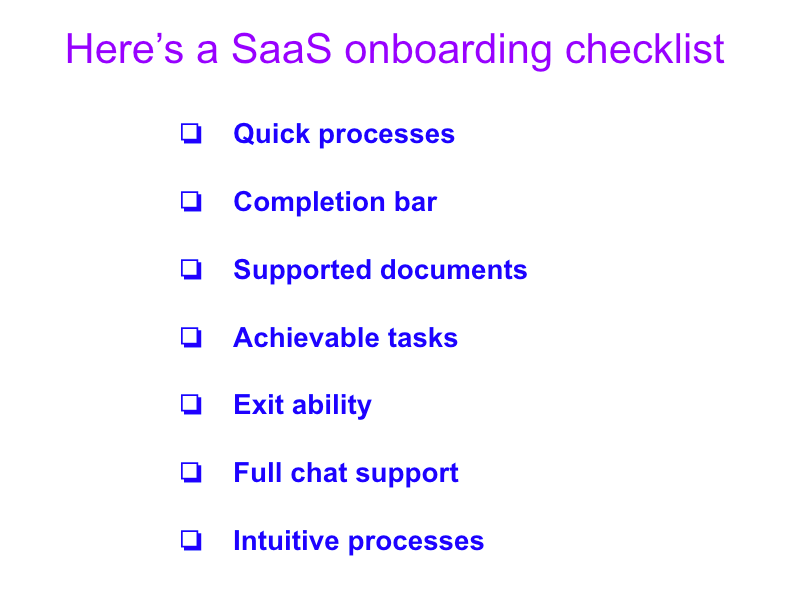Lots of customer retention—the ultimate goal for SaaS businesses like yours. Keeping churn rates low and long-term subscriptions ticking over is what brings in maximum revenue.
And this all means you want to build super strong customer relationships.
After all, users can cancel at any time—it’s your job to convince them to keep on subscribing. How do you do that? We’ve got the answers below. 👇
The types of customer relationships
Yes, there are many! These can all merge together in a customer segment. By which we mean you may have several types of relationships with your customer at any given time. And they are:
- Transactional: This is where there isn’t much of a relationship, it’s more a basic transaction deal.
- Long-term: Great news for all SaaS businesses—it’s where you have a strong relationship with a loyal customer. They’re high-quality users and you should aim to keep them on your subscription list.
- Personal assistance: Here it’s all about personal interaction with representatives around to offer one-to-one support.
- Dedicated personal assistance: This is where you have a dedicated representative around to help a customer’s every whim. Commitment like this is a big step for any SaaS business, but it’s also an incredible way to build strong relationships.
- Self-service: There’s no support here—the customer has everything they need to sort out whatever they’re aiming to do.
- Automated services: AI that recognizes customer behaviors. It can make recommendations for them as they go about their day.
- Communities: A popular choice these days. You can use online communities to manage customer requirements, so it’s a pretty personalized way of going about business.
- Co-creation: Amazon uses this technique, inviting paying customers to leave reviews and add value to its site. Meanwhile, YouTube gets users to create content. It’s an effective way to generate interest in your product. For example, you could get customers to actively involve themselves in your new features and updates (beta testing etc.).
The importance of customer relationships
Make no mistake, building customer relationships is a crucial task for your business. And the more effort you put in, the greater the rewards. 🎉
What you get back in response is pretty immense. You can expect:
- User loyalty.
- Increase customer lifetime value (CTLV).
- Long-term subscriptions.
- Lower churn rates (check out our tactics for improving customer retention for more tips there).
- Higher sales.
- Praise! Word of mouth appreciation from your users.
In summary? You’ll make your industry standing much stronger. All by focussing on your users, what they need, and how you can help.
So, it’s the big question—how do you go about building awesome relationships that’ll make a difference to your business? Let’s have a gander.
Here’s how to build strong customer relationships
Right, let’s get into the nitty gritty details. These are the steps that’ll make a difference—the tactics that build, and maintain, confidence and trust from your userbase. 👍
Use a customer-first focus
In the digital era, you can closely track the behavior of your customers. You’re so reliant on their subscriptions, the customer can directly influence your business growth decisions.
And that means they have quite a lot of power over SaaS vendors like yourself.
To make sure you don’t lose out, you can use a customer-first focus. This is where customer relationship management (CRM) comes in as a software solution—an entire product dedicated to making sure users get the most out of your software.
Examples there include Hubspot and Salesforce, which help you to keep track of everyone subscribing to you.
This is particularly important if you keep getting lots of new customers. Managing all of that lot can be stressful. 😰 And it’s easy to lose track of providing thorough support.
A CRM makes it much easier.
But if you have a smaller set of users, then your focus can stay on managing interpersonal communication.
You should do this consistently throughout a working week—daily, if necessary! Why not? To get the most out of SaaS, you’ve got to go the extra mile.
Educate and train
Most new users would need a dunce cap when trying out your software for the first time. It makes sense to give them a little helping hand.
For example, a crash course in how to use the software—starting with you and your employees.
Yes, you do need to understand your software inside out. Particularly as you roll out new features and updates. So, look to:
- Keep yourself up to date on how your software functions.
- Update your customers on how to make the most out of their subscription.
The result? No confusion from either side about what does what. Just straight up helpful information to customers, from a fully clued up team ready to dish out value.
Build trust right away
Once your customers subscribe, the worst thing you can do is rest on your laurels. You need to actively engage with them, from the onboarding process and onward.
A SaaS company following up with customers is much more likely to leave a better impression. This’ll leave you busy, for sure, because you’ll get a lot of messages from your full set of users.
But! As we mentioned above, it’s all about putting the effort in. If you’re there and ready to help, your users will start to trust you.
You can take things a step further during the onboarding process, too.
It’s an opportunity to guide your customers along and provide them with all the support they need.
One of the best tactics for this is regular communication. Get in touch with the new customer and listen to their responses—find out how you can help them.
You can have an onboarding checklist so you know you’re heading in the right direction, ticking off the requirements customers are likely to need after they join. Need an example? 👇

You can base your checklist off experience and add new pointers to check off the more feedback you receive from your users.
Further into your relationship, you can maintain confidence and trust by:
- Offering top quality customer support.
- Dealing with questions or complaints quickly.
- Offer an upgrade to the customer experience.
- Engaging with customers.
Engage with your customers
Once you’re past the new customer phase, you want to aim for long-term users. As we explain above, this means not leaving them to it and hoping for the best.
After an opening phase, your customers become intermediate users. They know much more than your new users, but you still need to support them.
How can you keep them engaged? With a few tactics like:
- Collecting customer feedback through surveys. 📋
- Personalizing their experience, such as using their names in emails. 📧
- And take advantage of email marketing to engage with them regularly. 👋
- Use a loyalty program offering rewards. 🏆
- Use social media to stay proactive with your users. 📳
These tactics will also keep your customers’ learning. You can offer them training from your product, which develops customers alongside your tech advances.
As you grow, so can your customers. Which’ll keep them engaged and happy to keep subscribing.
You can check out 6 types of in-product engagement tactics for a few other hints and tips here.
Use long-term users to teach you new tricks
Let your customers contact you—especially your most loyal users.
When you have advanced customers who know your product inside out, they can provide feedback on important little details.
Knowledge like that is incredibly valuable for your business.
These users may spot issues with your product you’re unaware of. They can flag them up for you, which can then make your product sharper and easier to use.
You can also involve them in beta tests of any upcoming new features, which can further identify issues which, if resolved, can prevent customers leaving.
It’s a good way to figure out how to add more value to your business.
Use customer success software
For a full 360 degree understanding of your users, this is the way forward. Using the software, you can measure your customer health. You can do fancy stuff like:
- Product usage tracking: How often users dip in and out of your software.
- Send out surveys: Get feedback direct from your users! Very helpful in understanding any issues they’re facing (and taking steps to fix them).
- Interactions: What are your users using the most? For how often? Why? With this data on your side, you’ll know what the most popular parts of your product are.
- Payments: Here you’ll keep track of who has paid what, when, and if there are any at risk users. If so, you can then target them with reminders they need to pay their subscription to keep using your excellent software. A friendly nudge, in other words.
Tactics like this give you a big advantage. You’re mastering your customer contact and support, making sure you’re always in the know about the latest developments.
All you need to do is act on the information you have to keep on building those relationships.
Use touch points to keep developing worth
A customer success playbook can come in handy to keep developing confidence and trust. This is a framework with a focus on making sure your users are happy. 😄
It’s up to you what you include in there, but you should aim for info and milestones like:
- A check-in schedule to make sure users are A-okay.
- Knowledge-sharing events your business can host.
- Business review news.
- Product and feature release news.
- Your campaigns and projects (plus, why they’re good news for users).
The point of all this is to show users your product has worth.
If you’re regularly taking the time to highlight the value you’re offering, it’s all an excellent way to make users stop and think, “I say! This product is just the best!”
Or something along those lines. Regardless, they’ll be happy and that’s good news for your business.
What are the two keys to building lasting customer relationships?
Adding value and providing customer service. These are the two big-hitting requirements in SaaS:
- Provide value with your product.
- Offer the customer a pretty awesome support service.
These steps work as they help to create happy customers pleased with your product. That leads to loyalty. And that means users will stay on and keep using your software.
Some SaaS businesses go all out and use the likes of a soft sell strategy. This marketing and sales combo uses less forceful techniques.
In an era where businesses bombard consumers with relentless adverts, prospects are increasingly canny about aggressive marketing tactics (like hard sells). Some even get angry about it. 😡
Instead, if you guide users in with supportive, low-pressure, and persuasive methods, you get a positive customer relationship building from the word go.
It’s entirely up to you, of course. But a friendlier approach in today’s market can work wonders compared to a screaming match of a marketing campaign.



 Follow us on LinkedIn
Follow us on LinkedIn



